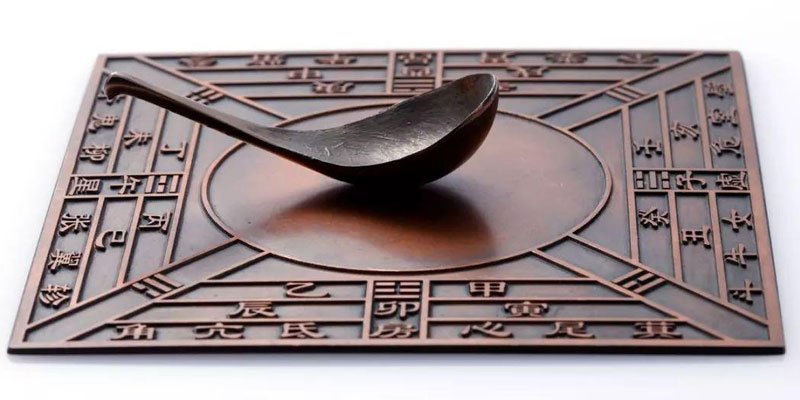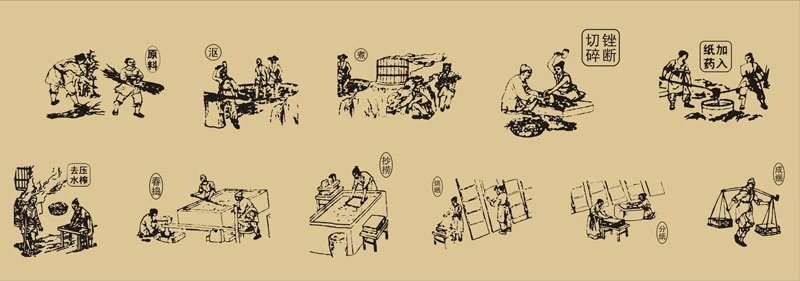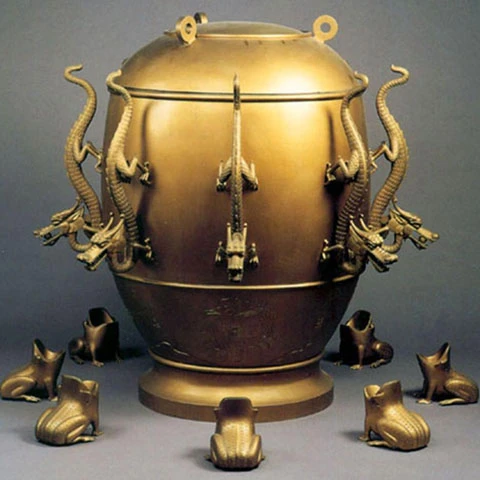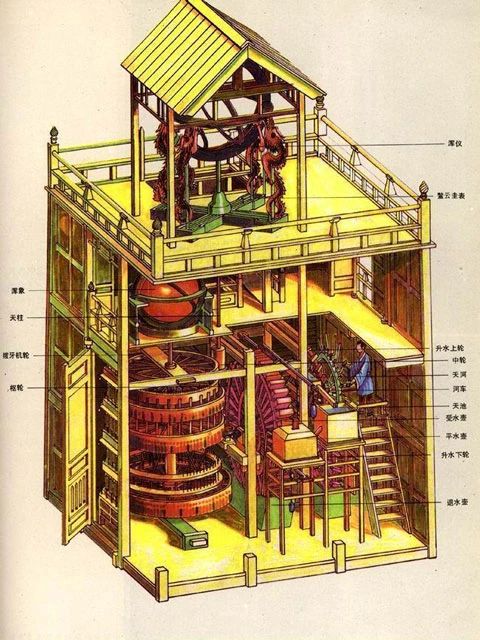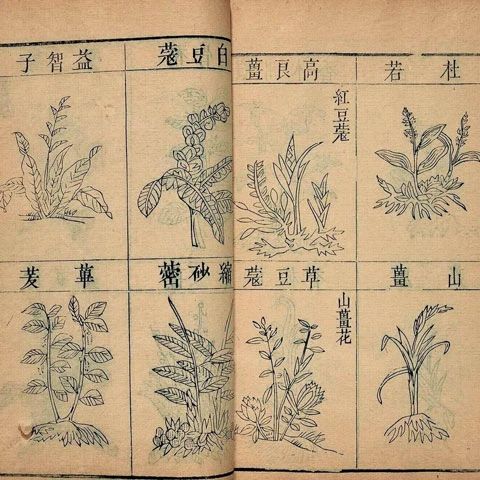Historians of science have overlooked China in their research. Thus, China's contribution to science and technology, evidenced in a number of technical solutions, has gone unnoticed. Ancient China was a world scientific and technological center before the 16th century.
In China, iron and steel metallurgy, paper, the mechanical watch, the transmission belt, the conversion of rotary motion into rectilinear motion, the movable type printing press, gunpowder, the stern rudder, watertight compartments, the armored hull of ships, propeller power, the windmill, the seismograph, gears, etc... the list could be endless.
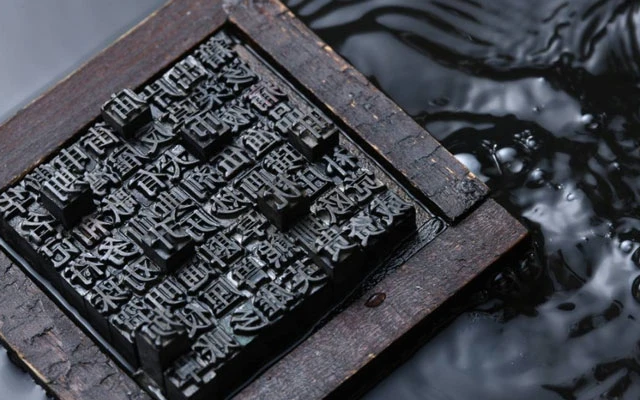
movable type printing press
Successes of Technology and Science in Ancient China
- Four Great Chinese Inventions
- Metallurgy and Casting of Iron Utensils
- Copper Production and Bronze Ware Casting
- Exploration and Use of Petroleum
- Coal Discovery and Mining
- Oenological Industry
- Sericulture
- Astral Catalogs and Astronomical Atlases
- Solar and Lunar Eclipse Observation
- Meridian Measurement
- Zhang Heng and His Seismograph
- Guo Shoujing and the "Shoushi Li" Calendar
- Decimal and Binary Systems
- Zu Chongzhi and the Value of π(Pi)
- Equal Temperament of 12 Notes
- Ingenious Inventions of Ancient China
There are even records of solar eclipses inscribed on bones or turtle shells from over 3,300 years ago.
In Kao Gong Ji (Archives of Industrial Techniques of China)Technology and Science in Ancient China of the Warring Kingdoms Period (475 B.C.-221 B.C.) the composition of six bronze and tin alloys and their different uses are explained in precise terms.
The written language was always considered more important than the spoken language, and perhaps this is the reason for the early development of paper. The Chinese invented the papermaking technique in the early 1st century, in the Western Han dynasty. Thanks to the reform of the scientist Cai Lun in 105, this technique quickly became popular in the country.
Around the 3rd century, the Chinese began to make porcelain. This technique was transmitted to Persia in the 11th century and from there, via Arabia, it passed to Italy in 1470, and then to the whole of Europe.
In the Tang dynasty (618-907), Taoist monks, who were looking for the elixir of eternal life, mixed coal, saltpeter and sulfur, and obtained gunpowder by accident, which would later be used for fireworks and by Imperial troops for the manufacture of grenades and bombs.
The compass and movable type printing had become widespread in China by the mid-11th century Song dynasty (960-1279). Chinese geographers were studying the magnetic deviation of the geographic north pole from the true north even before Europeans realized that the Earth possessed a magnetic field.
The primitive Chinese compass consisted of a metallic plate with a metallic spoon inside, whose handle pointed south. They also developed a kind of seismograph that could locate quite accurately the epicenter of a nearby earthquake.
Charcoal couplet and engraved seal printing seem to have been the most economical methods of reproducing writing, probably because of their structure, composed of thousands of characters that precluded the use of movable type.
The belief that the emperor was a son of heaven, and that extraordinary celestial and earthly events were signs of approval or criticism, was the cause of the early development of astronomical observation in China.
The imperial court had its own astronomy bureau, and as early as the 13th century, the Peking Observatory had 17 different astronomical instruments. Chinese astronomers recorded the passage of Halley's comet in 467 BC.
In the ninth century BC they already used a 360-day calendar, which successive dynasties tried to improve. In the 13th century, they fixed the length of the year at 365.2424 days, almost the same as that established by modern calculations.
The Su Song Clock Tower, erected in 1088, is an early example of the developed Chinese clockmaking art. Powered by a water wheel and with a chain drive, a kind of escapement regulated the wheels to mark astronomical movements with great precision.
Around 1100, Chinese iron foundries were producing quantities of iron and steel that Europe would not reach until the 17th century. The use of pulley rigging shows that the Chinese, as early as the 5th century, knew the laws of mechanics.
The so-called Archimedes screw was used to pump water in the 1st century, and the waterwheel in the 4th and 5th centuries. In fact, irrigation, which was essential to Chinese agriculture, exerted a decisive influence on the development of technology.
In the 15th century,Li Shizhen edited his famous work Compendium of Materia Medica, considered the encyclopedia of ancient Chinese medical science. By this time, the development of Chinese science had reached its peak.
The well-known English scientist Dr. Joseph Needham considered that China managed to reach a scientific level that left Western countries far behind in the 3rd and 13th centuries. Many of the inventions still in use in the modern Western world originated in China.
Scientific Theories of Ancient China
Apart from technical inventions, the Chinese also advanced in the elaboration of scientific theories, considered little less than "absurd", as the missionary Matteo Ricci said in the 16th century. To give some examples: the concepts of vacuum and infinity have been known since ancient times.
Emptiness has been a category of Taoist thought since the 4th century B.C. and infinity was part of the theoretical baggage of the astronomical school Xuan Ye (2nd century). Such theoretical and technological precocity made China the most advanced society until the end of the 17th century. Since then, its evolution has gone in a different direction from that of the West, lagging behind the latter.
Lately, in leading sectors of science, such as nuclear physics, Chinese philosophy, which was never dogmatic like European philosophy, is being reevaluated. At the basis of Chinese theoretical speculations was an organicist conception of the Universe, in which all natural phenomena, living or not, are interrelated. Transposed to the field of ecology, Chinese organicism holds that the respiration of living beings must be in harmony with the respiration of nature, something that is highly topical in view of the ecological disasters caused by human action on nature.
